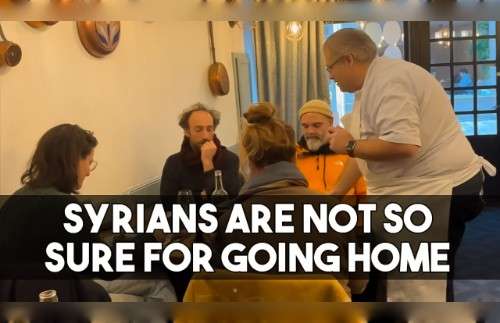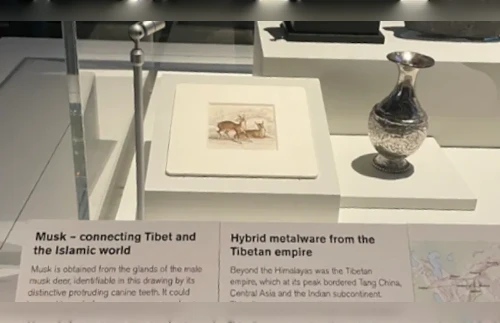Political performance artist Kacey Wong’s next work will address Beijing’s growing threats against Taiwan.
By Chen Mei-hwa

Hong Kong political artist Kacey Wong is planning a new exhibition on the the democratic island of Taiwan, where he has described himself as “exiled” during a citywide crackdown on political opposition and public dissent under a draconian national security law imposed by Beijing.
“I will be launching an art exhibition in March in [the city of] Tainan,” Wong said via his Twitter account on Jan. 8.
Wong, whose political performance art has included works referencing the 1989 Tiananmen massacre and pro-democracy movement, Chinese censorship, and the national anthem law banning any disrespect to the Chinese national anthem in Hong Kong, says his next work will combine elements of traditional culture and current fears over the Chinese Communist Party (CCP)’s growing military threats against Taiwan.
“[I will be] creating a dragon missile launching system, combining local beliefs and military tension into one, to vanguard freedom and democracy of Taiwan with art!” Wong tweeted.
Wong confirmed he had left Hong Kong for Taiwan in August, joining a growing wave of migrants seeking a democratic society in which they can express themselves freely without political constraint.
He said his departure was prompted by the arrests of 47 opposition politicians and pro-democracy activists for “subversion” under the national security law for taking part in a democratic primary in the summer of 2020.
Wong has also been denounced by the CCP-run Ta Kung Pao newspaper. Denunciations in state media are increasingly a precursor to arrest under the national security law or illiberal, colonial-era laws relating to sedition and public assembly.
A graduate in architecture and sculpture from schools in New York, London and Australia, Wong is a former assistant professor at the Hong Kong Polytechnic’s School of Design.
His work became popular during the 2019 protest movement, which started as a series of mass popular protests against plans to allow the extradition of alleged criminal suspects to face trial in mainland China, and broadened to include demands for fully democratic elections and greater official accountability.
At the start of the protest movement, he pushed around a “mobile prison” installation on the streets labelled with a sign “HK→CN.”
He also took to the streets on June 3, 2019, the 30th anniversary of the Tiananmen massacre, playing the Chinese national anthem, the March of the Volunteers, as a sad lament on the accordion.
Earlier work has included tying himself up in red string to protest the disappearances of Causeway Bay booksellers Lee Bo and Lam Wing-kei, who emigrated to Taiwan in 2019, warning that the mainland Chinese authorities would soon pursue dissidents in Hong Kong despite promising to guarantee the city’s freedoms, a prediction that has proved accurate since the national security law took effect.
Wong’s last piece of performance art in Hong Kong was on July 1, 2020, amid street protests on the first day that the national security law took effect.
He walked the streets dressed like a tourist from mainland China toting shopping bags labeled with a selection of crimes under the national security law.
“It was pretty awful because the police had blocked off every street and were throwing pepper bombs randomly, so the smell was everywhere,” Wong told RFA in an interview in September 2021.
“That was the last political performance art I did as part of an actual demonstration.”
Continues to speak out
Wong has continued to speak out on Hong Kong politics.
He recently quipped on Twitter that the most powerful party in the city’s new Legislative Council (LegCo), chosen under new rules ensuring that only “patriots” pre-approved by a government-backed committee could run in last month’s elections, was the “Birthday Party,” referring to a mass gathering of pro-CCP political figures and lawmakers at a scandalous party that resulted in a cluster of COVID-19 cases, compulsory mass quarantine and the wrath of Beijing.
“For me, everything that happened in Hong Kong is actually a kind of war, a war of culture, censorship and white terror spreading across every social class,” Wong told RFA. “Hong Kong people have said before that the red lines in life keep moving, but they’re more of a red sea.”
“The truth is that there are no lines,” Wong said. “The lines are drawn when they say you broke the law, and then they are moved to a different point after that.”
“Teachers don’t know how to teach any more because their students might make a complaint about them,” he said. “A lot of people are changing their names and deleting photos on Facebook.”
“People just talk quietly among their friends now, while before people in Hong Kong could sit down for dimsum and talk and laugh about anything and everything,” Wong said.
Wong appreciates his new environment.
“The skies here are much bigger, because everyone in Hong Kong lives in high-rise buildings, 30-stories, 60-stories high, so you can only see a small amount of sky from the street.”
“My intention in leaving wasn’t to leave Hong Kong behind, but to switch to a different battlefield,” Wong said. “That’s how I see it.”
He still feels a strong sense of exile, too.
“I didn’t leave Hong Kong. Hong Kong left me,” Wong said. “If I want Hong Kong to survive, it has to be hidden away inside me.”
“But I’ll live as a Hongkonger wherever I am.”
Translated and edited by Luisetta Mudie.
Copyright © 1998-2020, RFA. Used with the permission of Radio Free Asia, 2025 M St. NW, Suite 300, Washington DC 20036. https://www.rfa.org















